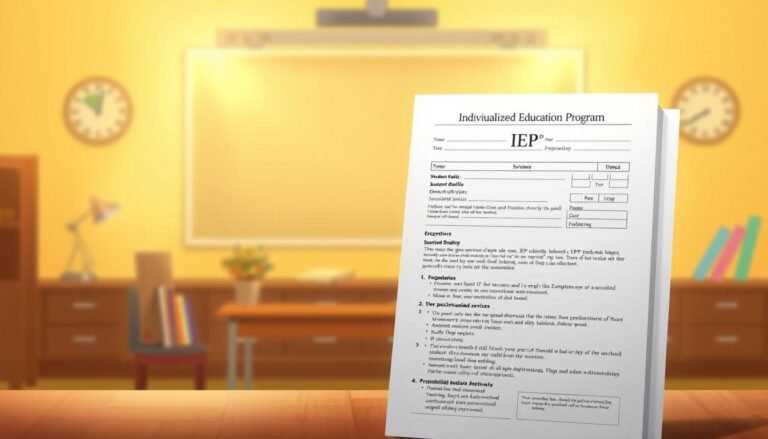
From Symptoms to Solutions: The Ultimate Home Guide for Learning Disability Testing
Introduction
Navigating the complexities of learning disabilities can be overwhelming for parents, educators, and affected individuals alike. Symptoms often manifest in myriad ways—frustrations in the classroom, challenges in social situations, or barriers to everyday tasks can all signal underlying issues. Understanding these signs and responding effectively is crucial in ensuring that those with learning disabilities receive the support they need. In this comprehensive guide, "From Symptoms to Solutions: A Home Guide for Learning Disability Testing," we will explore how to identify these symptoms, understand their implications, and take actionable steps toward solutions, all from the comfort of your home.
Understanding Learning Disabilities
What are Learning Disabilities?
Learning disabilities (LD) encompass a range of neurological conditions that affect the brain’s ability to receive, process, and respond to information. Common types of learning disabilities include:
- Dyslexia: Affects reading abilities.
- Dysgraphia: Impacts writing skills.
- Dyscalculia: Concerns mathematical understanding.
- Nonverbal Learning Disabilities: Challenges in nonverbal cues and social skills.
Symptoms of Learning Disabilities
Recognizing the symptoms is the first step toward effective testing and intervention. While each learning disability manifests differently, common symptoms may include:
- Difficulty following multi-step directions.
- Trouble retaining information.
- Slow reading speed or difficulty with comprehension.
- Issues with organization or time management.
Case Study Analysis: Emma’s Journey
Emma, a 10-year-old girl, struggled with reading comprehension despite being average in intelligence and motivation. Her parents noticed her frustration with homework leading to significant anxiety. This case highlights the need for symptom recognition as the first step in the journey from symptoms to solutions. Identifying her struggles allowed them to seek appropriate assessments.
Home Testing: Initial Steps
Gathering Observations
Before any formal testing, it’s essential to gather observations of the individual’s behavior and performance over time. Keeping a symptom diary can help identify patterns. This diary can include:
- Daily academic performance notes.
- Instances of frustration or anxiety.
- Comparisons of academic performance across subjects.
Online Resources and Screening Tools
While professional assessments are vital, there are several online resources and screening tools available that can provide preliminary insights. Websites like Understood.org and the National Center for Learning Disabilities offer quizzes and checklists to help identify potential learning disabilities.
Case Study Analysis: Tom’s Screening
Tom, a 12-year-old boy, exhibited difficulty in math. After discussing his challenges with his parents, they utilized an online screening tool provided by Understood.org. The results pointed to possible dyscalculia, prompting them to seek further testing. This case emphasizes the value of preliminary screenings in guiding parents toward the correct professionals.
Professional Testing: What to Expect
Conducting formal testing typically involves a licensed psychologist or educational specialist. It may include:
- Cognitive Assessments: Evaluating IQ and processing speed.
- Academic Testing: Measuring proficiency in reading, writing, and math.
- Behavioral Assessments: Observations in various settings.
The Importance of a Comprehensive Evaluation
It’s not enough to conduct a single test. A comprehensive evaluation provides a complete picture, allowing for effective intervention strategies.
Case Study Analysis: Jake’s Evaluation
Jake, a 14-year-old, underwent a comprehensive evaluation after struggles with multiple subjects and social interactions. The results revealed both dyslexia and a nonverbal learning disability. This holistic view enabled his educational team to personalize his learning plan, emphasizing the significance of thorough testing.
Implementing Solutions at Home
Creating a Supportive Learning Environment
Once a learning disability has been identified, implementing strategies at home can enhance the learning experience. Here are practical approaches to support learning:
- Structured Routines: Establish a predictable daily schedule to reduce anxiety and enhance focus.
- Multisensory Learning Techniques: Incorporate auditory, visual, and kinesthetic learning styles into study sessions.
- Assistive Technology: Utilize tools like text-to-speech applications or organizational apps to support learning.
Case Study Analysis: Lisa’s Home Learning Strategies
Lisa’s parents implemented a structured routine that included specific homework times accompanied by breaks. They also used digital tools to enhance her engagement. As a result, Lisa made significant progress in her reading skills, demonstrating the effectiveness of a tailored home environment.
Collaborating with Educators and Professionals
Building a Collaborative Team
A successful intervention for learning disabilities often requires collaboration between parents, teachers, and specialists. Establishing an open line of communication ensures that all parties are on the same page regarding strategies and expectations.
Individualized Education Plans (IEPs)
For many children with learning disabilities, an IEP is crucial for academic success. Collaborate with educators to create an IEP that clearly outlines the accommodations and modifications necessary for your child’s success.
Case Study Analysis: Mark’s IEP Process
Mark’s school initiated an IEP meeting after his diagnosis of dyslexia. By involving various stakeholders—parents, special education teachers, and therapists—they developed an individualized plan that catered specifically to Mark’s needs, illustrating the importance of collaboration and understanding.
Building Resilience and Self-Advocacy
Fostering a Growth Mindset
Teaching children to adopt a growth mindset can significantly impact their perception of challenges posed by learning disabilities. Encourage perseverance and celebrate progress to foster resilience.
Self-Advocacy Skills
Empowering children with the ability to understand their learning needs will enable them to communicate effectively with peers and educators. Self-advocacy is a crucial skill that helps them navigate academic environments.
Case Study Analysis: Sarah’s Empowerment Journey
Sarah, diagnosed with dysgraphia, was encouraged to express her needs in the classroom. With her parents’ and teachers’ support, she learned to communicate her challenges with writing, which improved her confidence. This case exemplifies how building self-advocacy can lead to empowerment.
Conclusion
In the journey from Symptoms to Solutions: A Home Guide for Learning Disability Testing, understanding the signs and taking proactive steps are essential for effective intervention. Through careful observation, preliminary screenings, professional assessments, tailored home strategies, and collaboration with educators, families can create a nurturing environment that fosters growth.
Every child has unique strengths and challenges, but with the right tools and support, they can thrive. As you navigate this path, remember that you are not alone. Resources, communities, and professionals are ready to assist you every step of the way.
FAQs
1. What are the main signs of a learning disability?
Common signs include difficulty in reading, writing, math skills, and problems with memory or organization. Observing these challenges over time is key to recognizing a potential learning disability.
2. How can I start the process of testing for learning disabilities at home?
Begin by noting specific challenges your child faces and consider using online screening tools to gather insights. Consult with educators for further recommendations.
3. What is the difference between a learning disability and a learning difficulty?
Learning disabilities are neurological conditions that affect the brain’s ability to process information, while learning difficulties may arise from external factors like poor teaching methods or lack of resources.
4. How often should learning disability assessments be conducted?
Assessments should be conducted at key transitions, such as moving from elementary to middle school or high school, as well as when significant changes or challenges arise.
5. What can I do if my child is not receiving the support they need at school?
If your child is not receiving appropriate support, request a meeting with the school’s special education team to discuss your concerns and explore an Individualized Education Plan (IEP).
This informative and engaging article empowers parents and educators with knowledge on identifying and addressing learning disabilities. By moving from symptoms to proactive solutions, we not only enhance understanding but also promote a supportive environment for all learners.
















